Make Rustic American Flags With This Easy Tutorial
We just observed Memorial Day, honoring those who died for our freedom and we are heading into Fourth of July when we celebrate that freedom. This is the perfect time of year to display the red, white and blue in our homes, by the front door, on a patio area and the front porch or covered porches. In this post take bright white new flags and make rustic American flags with this easy tutorial using instant coffee mix.
I wanted a more vintage look to the flags that I am selling in my vintage and upcycled shop. The coffee stain muted the red stripes and the white stars and stripes turned creamy – a perfect rustic look.
A Short History Of The U.S. Flag
I love learning the history of people, places and things. It’s truly fascinating. Which is why I wanted to explore the origins of the first American flag.
Early American flags were all different, each colony had their own which they flew on colonial vessels. On June 14, 1777, the Continental Congress passed an act establishing an official flag for the new nation. The resolution stated: “Resolved, that the flag of the United States be thirteen stripes, alternate red and white; that the union be thirteen stars, white in a blue field, representing a new constellation.”
Scholars and historians state that the flag design was created by New Jersey Congressman Francis Hopkinson. Folklore and legend says that the flag was first sewn by Philadelphia seamstress Betsy Ross.
From our Shop
Shop Twigs and Fluff for vintage inspired flashcards for everyday and the holidays.
How Did The American Flag Get the Name “Old Glory”?
A large, 10-by-17-foot flag was given the name Old Glory by its owner, William Driver, a sea captain from Massachusetts It survived multiple attempts of damage during the Civil War.
How The First Flags Were Made
Early Americans preferred wool flags, however cotton flags were more readily available because of the cost. The white fabric used for the flag’s famous red stripes and blue canton were given its colors with natural dyes from vegetable fiber. At first red dye was extracted from the root of the madder plant and the blue was from indigo. The first synthetic dye was created in 1856 and used after that.
In 1865, President Lincoln took Made In The USA to a new level by signing a law requiring that the federal government purchase flag bunting only from American manufacturers.
Fun Flag Facts
- The 13 horizontal stripes of the flag, seven red stripes alternating with six white stripes. The stripes represent the original 13 colonies and the star area represents the 50 states of the Union.
- Colors of the flag are symbolic. Red symbolizes hardiness and valor, white symbolizes purity and innocence, and blue represents vigilance, perseverance and justice.
- The canton of the US flag is on the top left corner (upper hoist), which is the position of honor. It is also called the Union – it is the blue area where the 50 stars are sewn or appliqued.
- Between 1777 and 1960 Congress passed several acts that changed the shape, design and arrangement of the flag and allowed stars to be added to reflect the admission of each new state.
An Easy Tutorial For Rustic American Flags
Gather Your Materials
I had the cooling rack, cooking sheet and tongs on hand and purchased everything else at The Dollar (and 25 cents) Store.
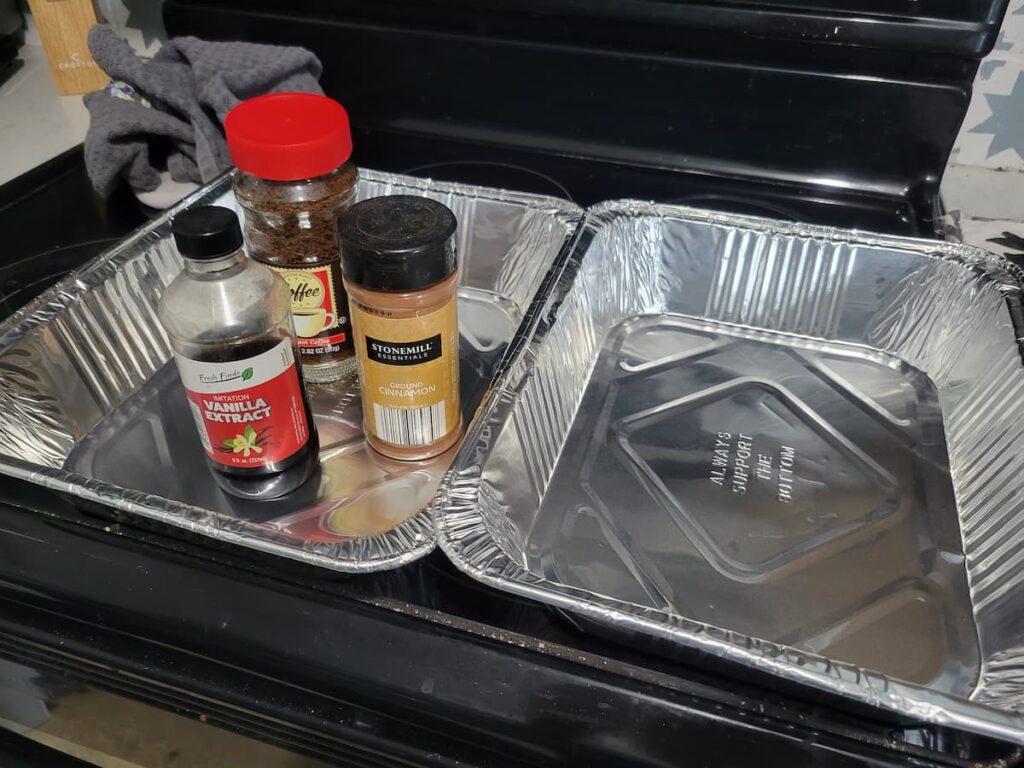
The Steps To Make Rustic American Flags
First thing is to make your hot water. I made a pot of hot water in my coffee maker but feel free to use very hot tap water if that’s what is available.
The next step is to mix your ingredients in one of your large metal pans. The above ingredients are exact measurements to get the perfect aged look but feel free to double or more the recipe.
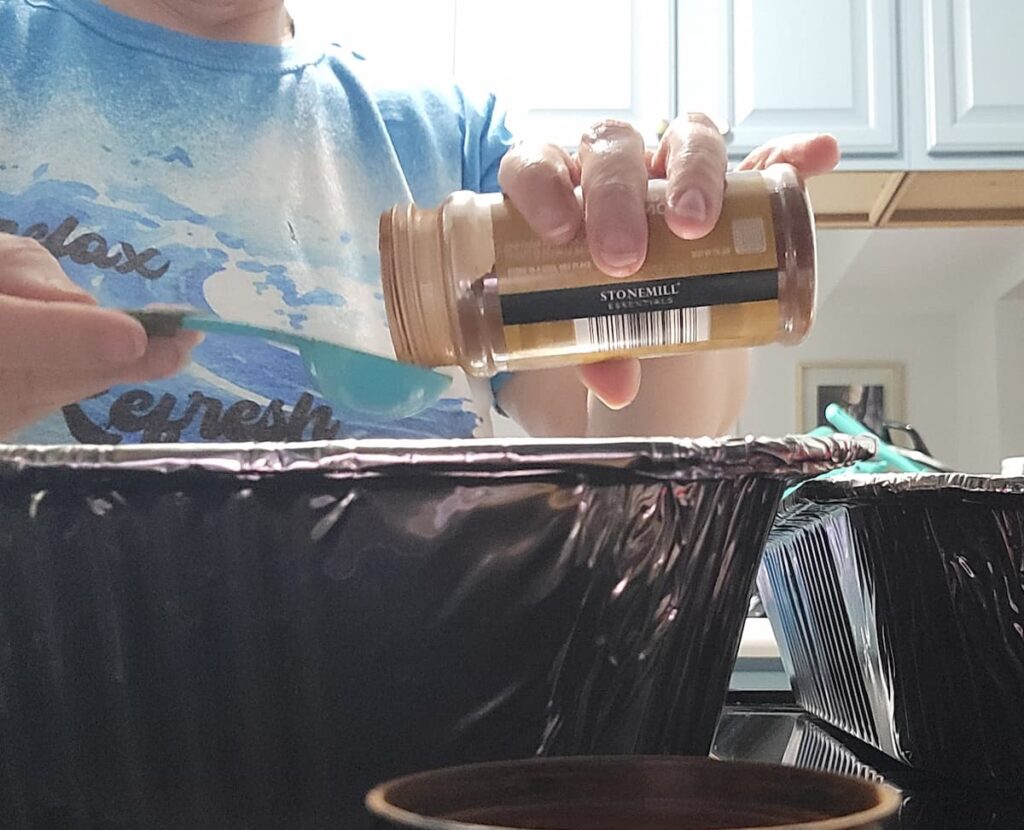
I was coffee staining 130 flags at a time so I quadrupled the recipe!
Pour cold water in the other metal pan.
Remove your fabric flag (s) from their dowel rod or its flag pole if you will. Mine just slid right off – the great thing was that there wasn’t even a line of glue holding the flag in place!
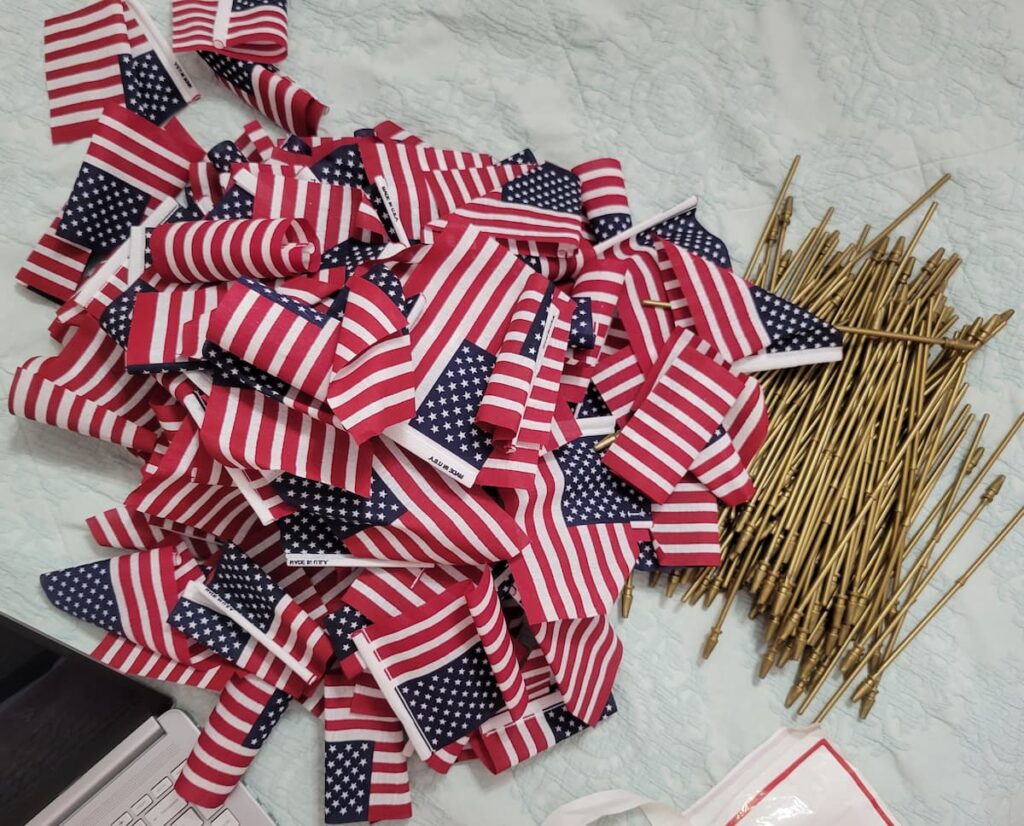
Place your flags in the coffee bath and let it soak for approximately five to ten minutes. Just keep an eye on them – you want them a bit darker then you’ll want the finished project.
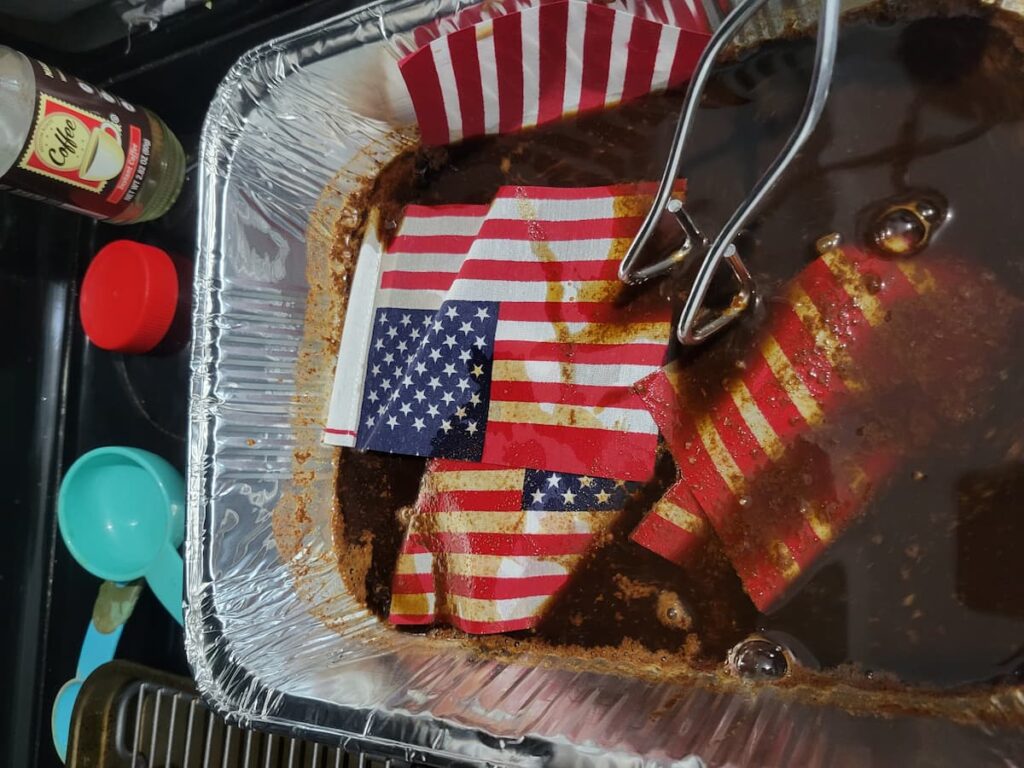
Cinnamon in the mix creates “rust and dirt specks”
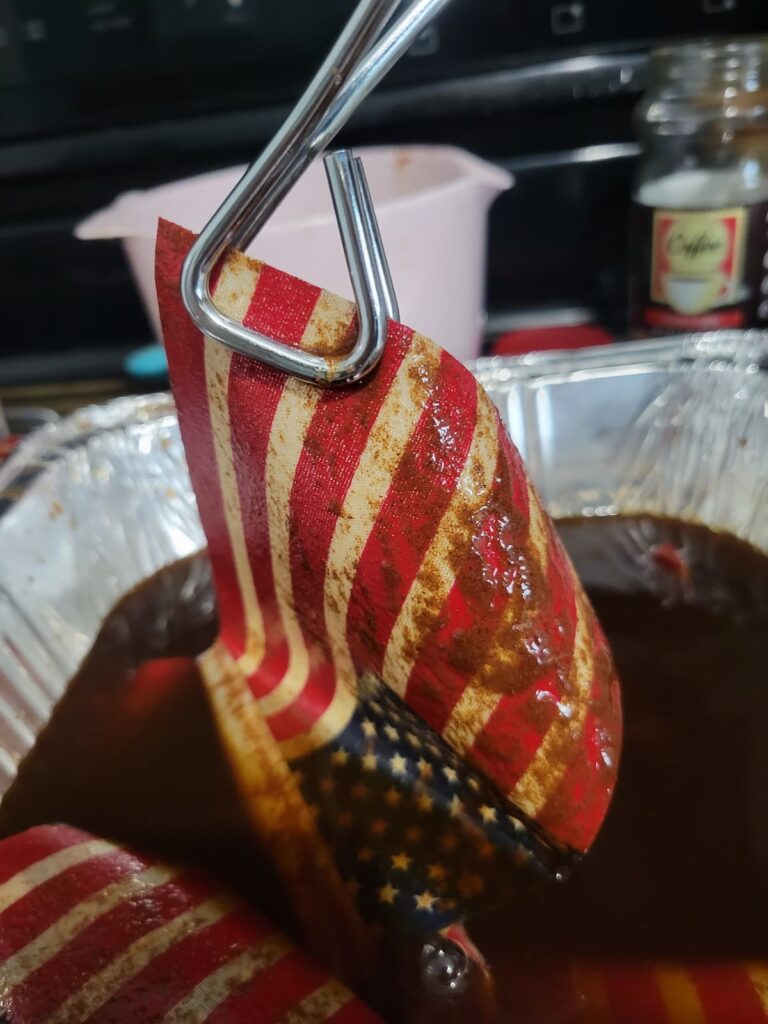
The vanilla makes it smell yummy in your centerpiece or wreath.
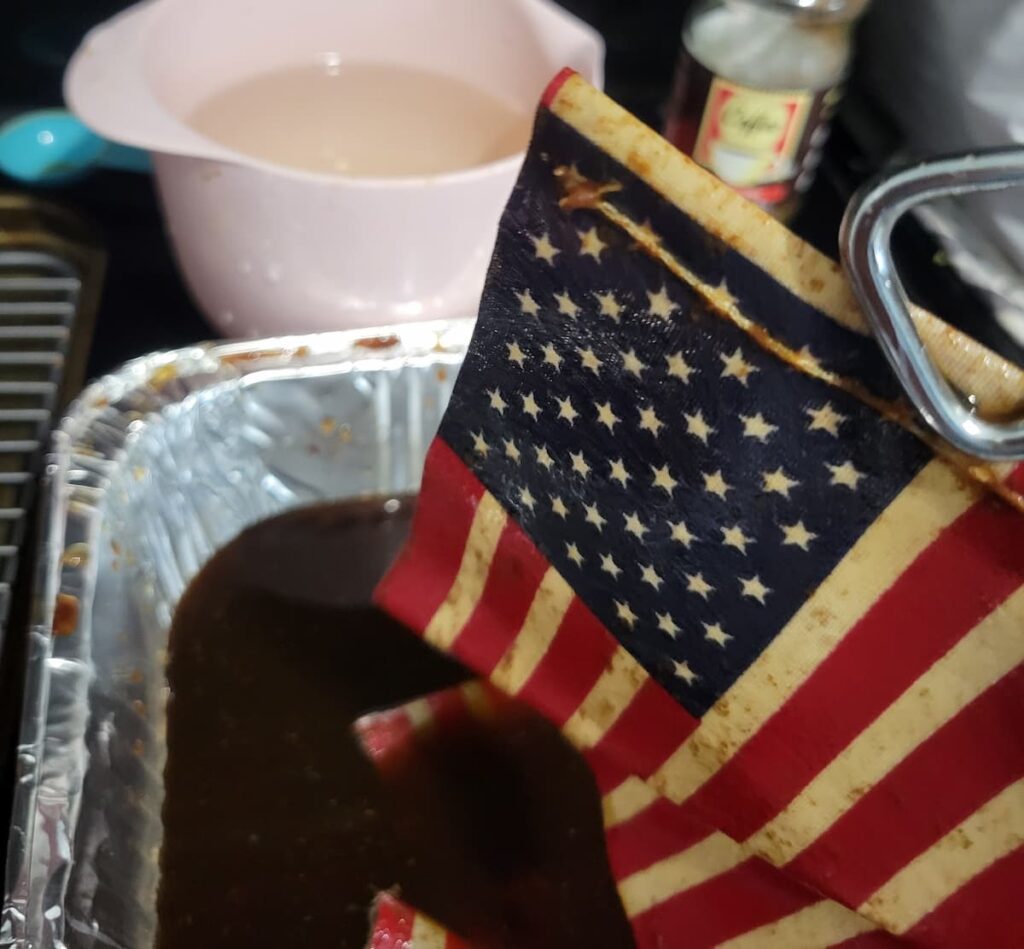
And the coffee ages it to perfection.
See Coffee Staining In Action on Youtube:
When they are the just right color (remember a bit darker then you would like) rinse the flag in cold water with a quick dunk. This will wash off big clumps of cinnamon and set the color.
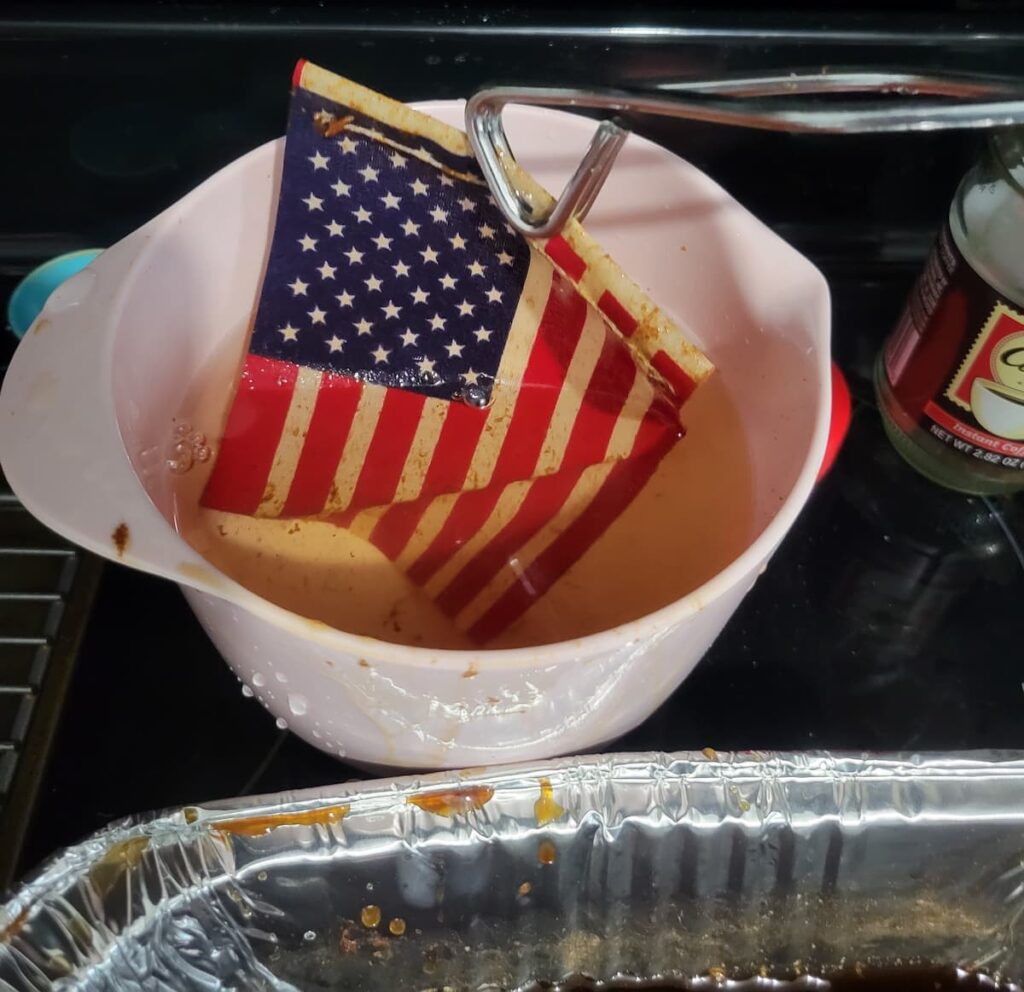
Lay the flags out on your drying rack to dry. I live in Texas so our humidity is about 9200% so I will not attempt to tell you how long it took to dry the 130 flags in my kitchen. I did get desperate so I stuck them in the dryer. I do not recommend this. My dryer smelled like a delicious french vanilla coffee for weeks!
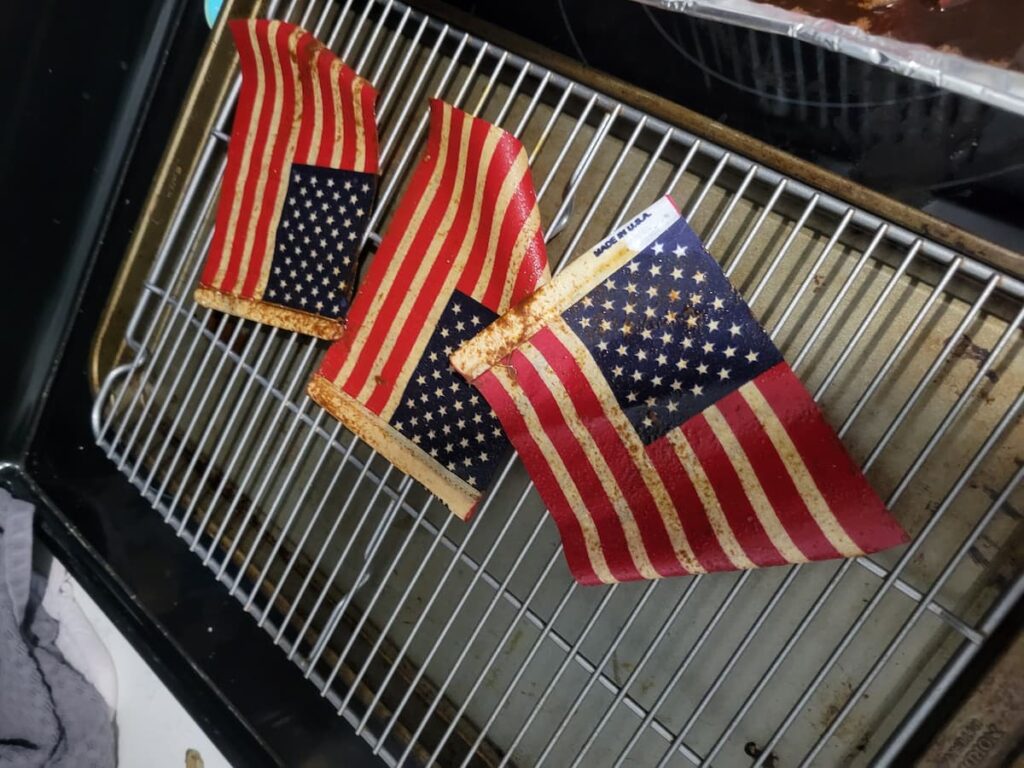
Once your beautiful flag (or flags) are good and dry, slide them back on their wooden dowel.
Fun Flag Extras
- Spray paint the flag’s raw wood dowel black or gold.
- Hot glue a wood bead to the top of the dowel and dress it up with glitter.
- String a piece of twine through the edges of the cloth and create a banner.
- Try this project with large flags.
- Use the coffee stain on drop cloth, red fabric and a blue piece of fabric to create your own DIY flag.
The Finished Rustic American Flags

Favorite Patriotic DIY Projects
Latest projects to celebrate Independence Day and other patriotic holidays
Before You Fly Away To Make Rustic American Flags With This Easy Tutorial
Pin any of the images to Pinterest so you can make your own rustic American flags – hover over any picture to save the pin to your Pinterest account. So easy!
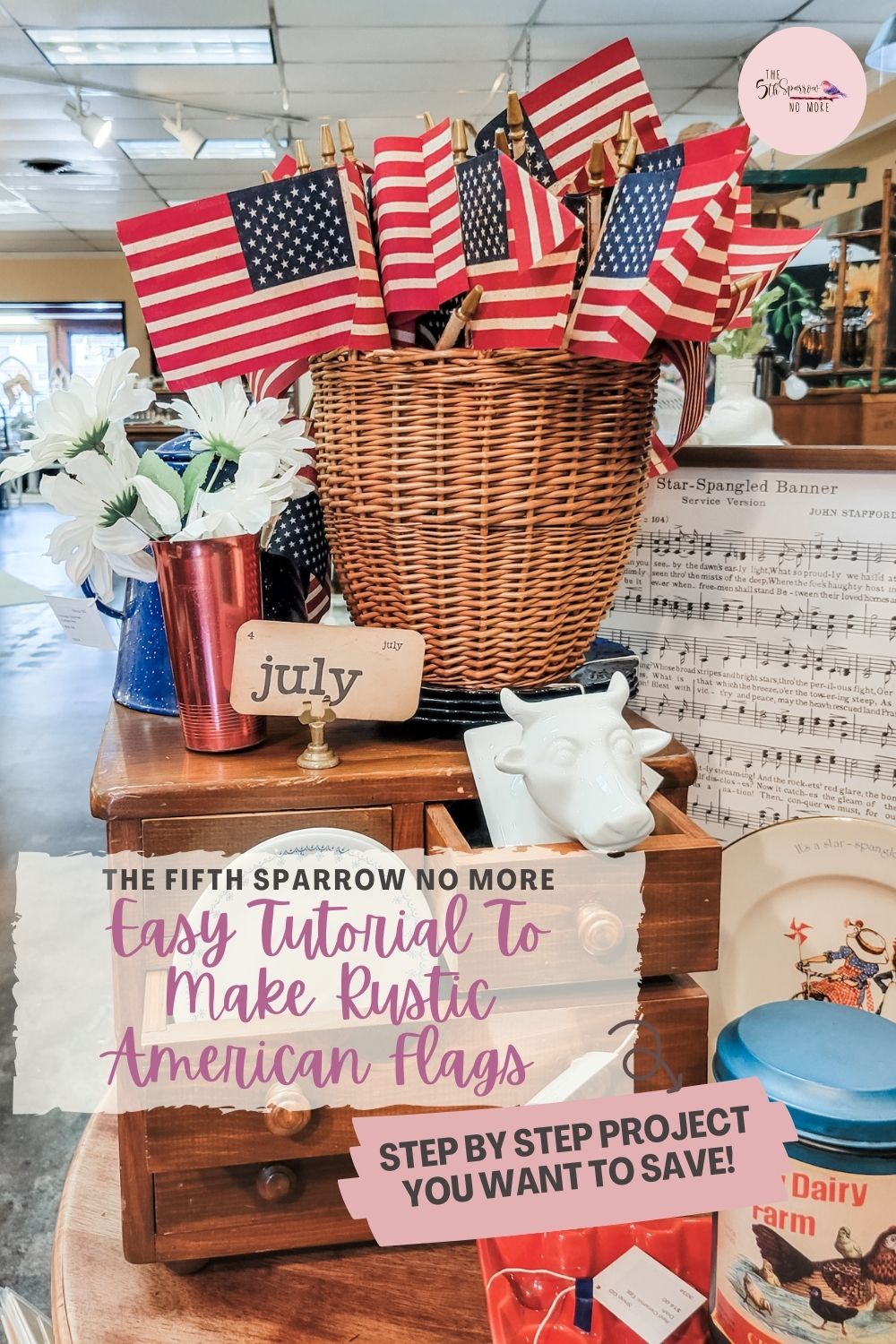
Visit My YouTube Channel!
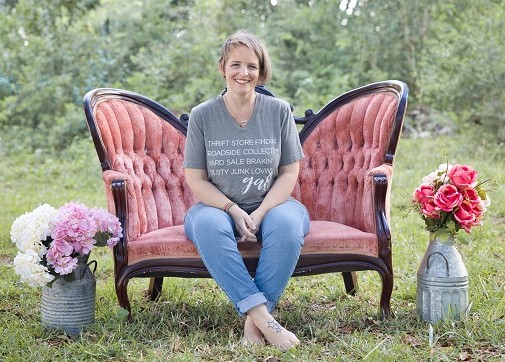

[mailerlite_form form_id=4]
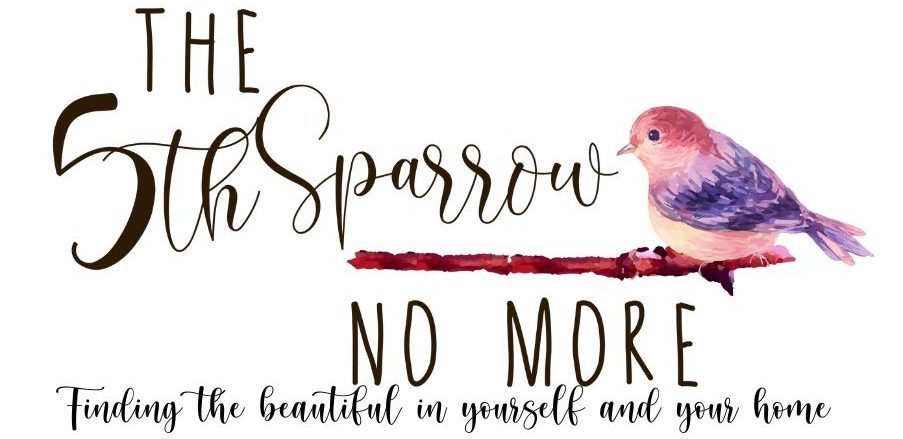
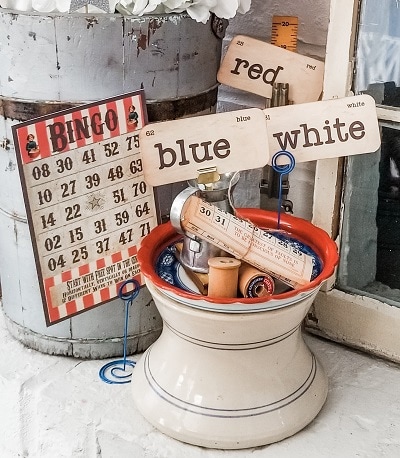
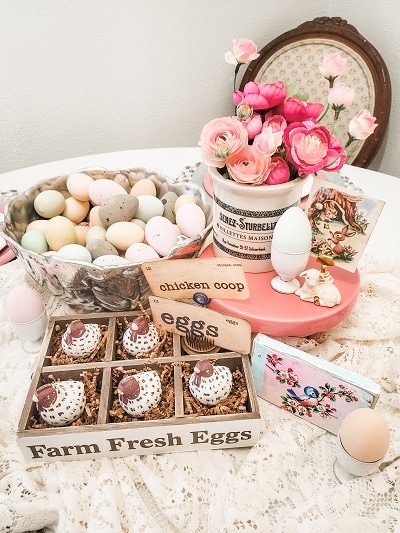
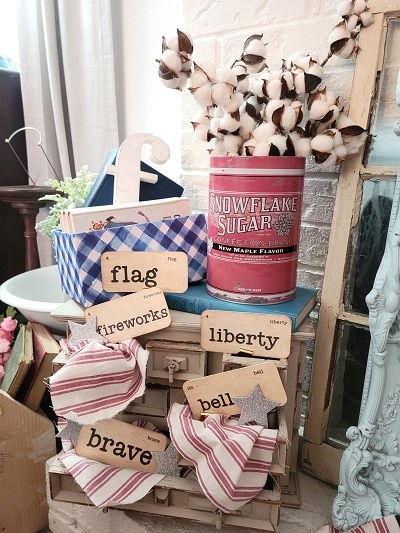

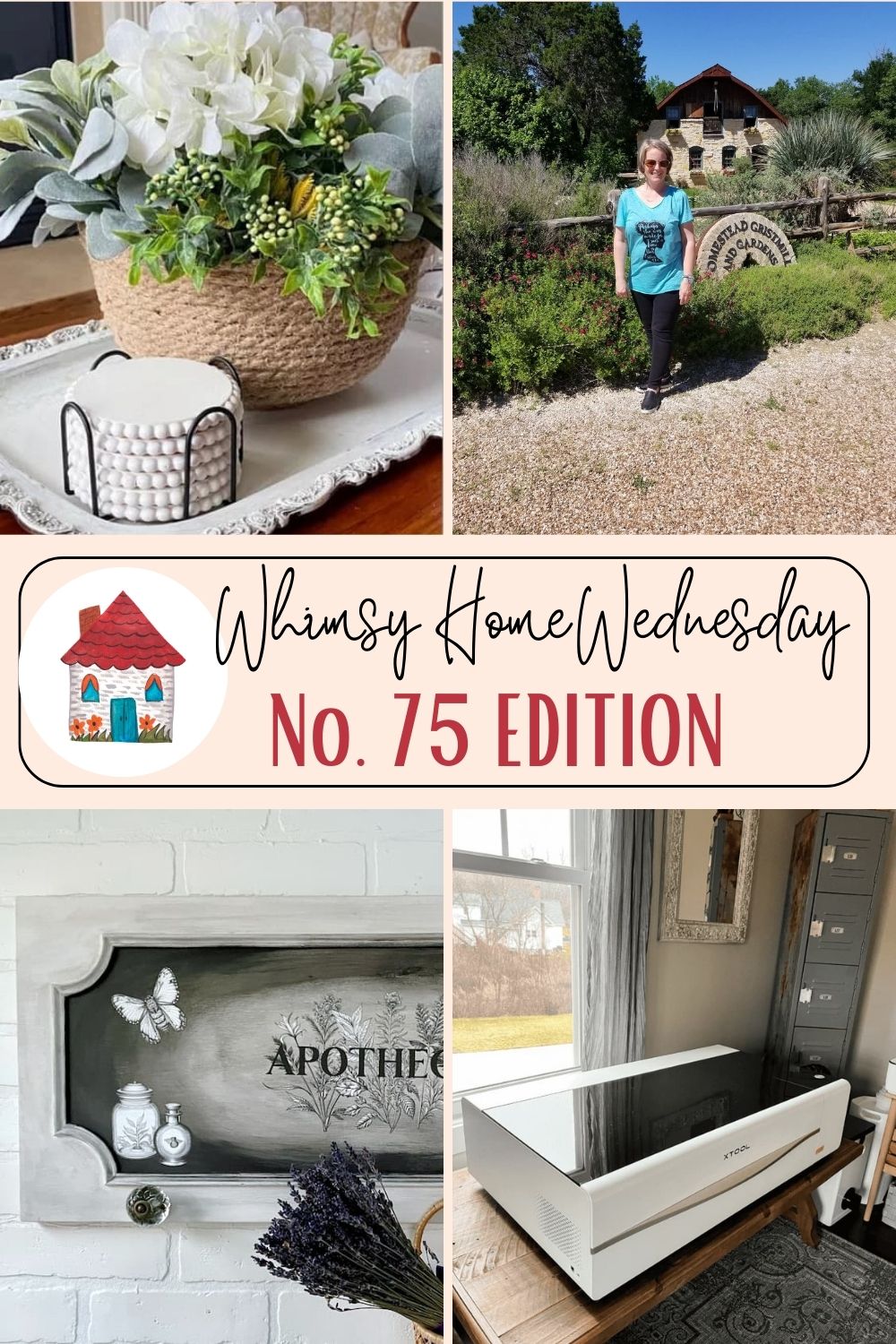

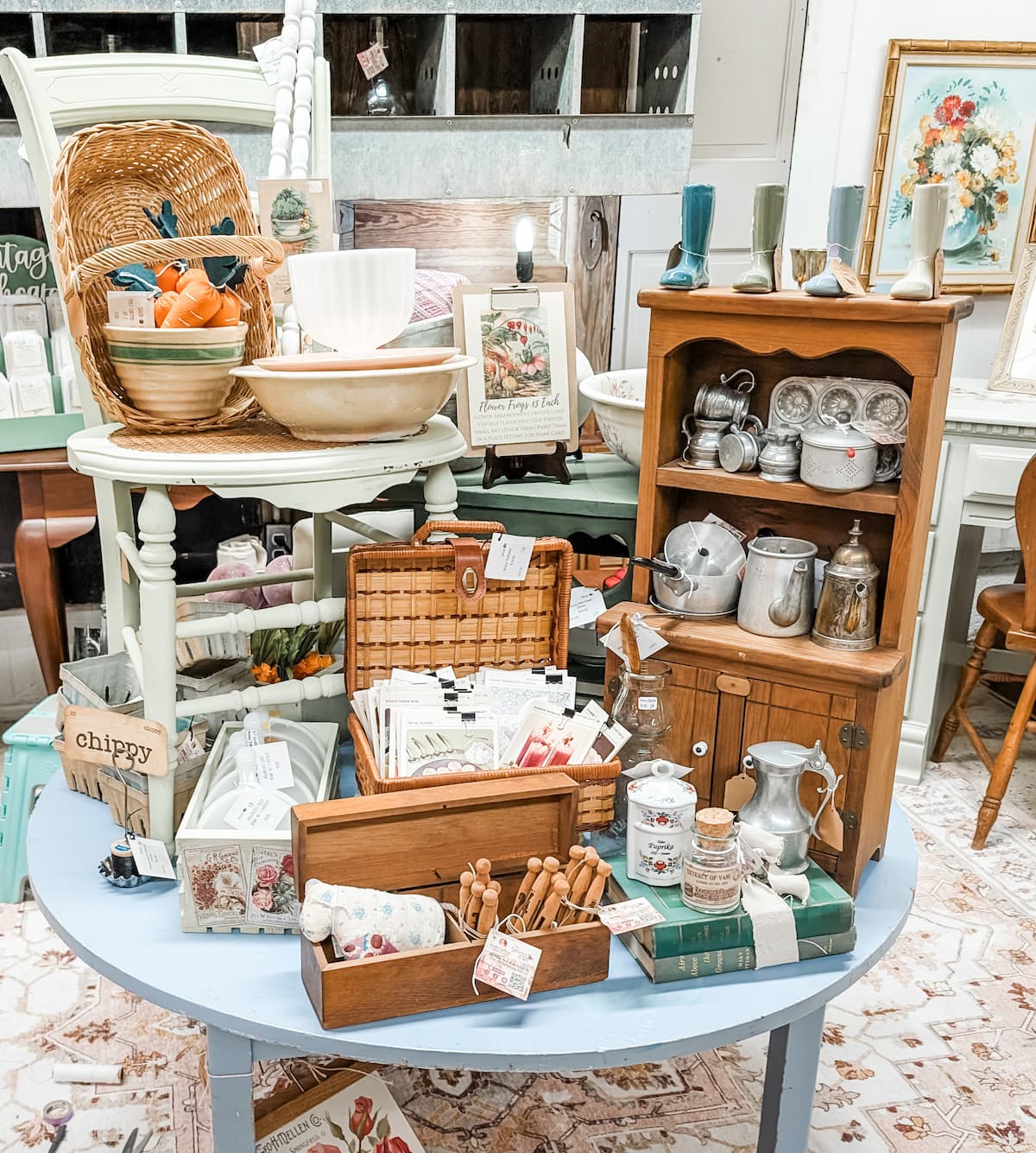
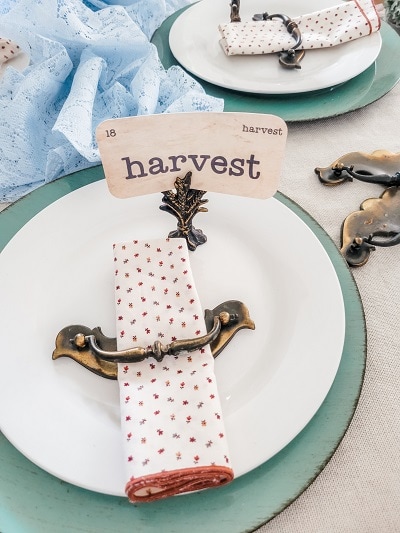
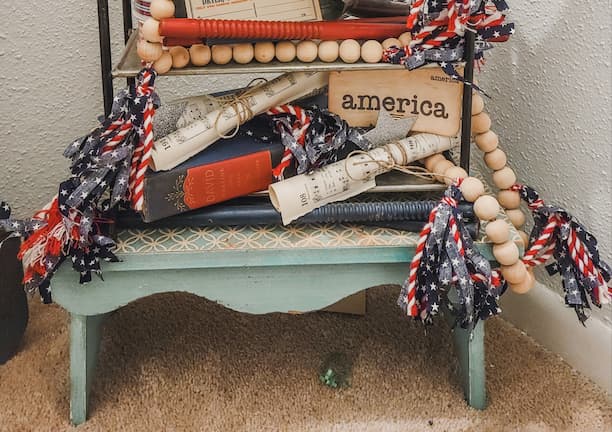
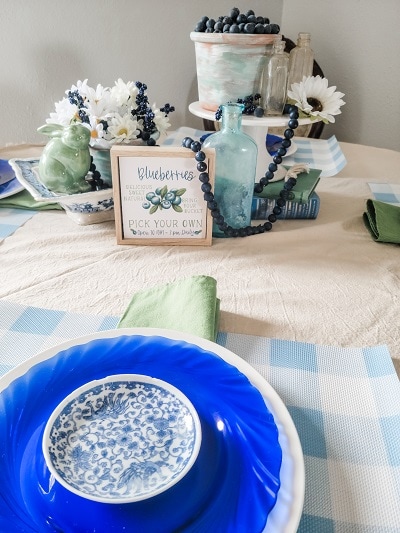
LOVE this idea as I decorate my Den for the Summer in a rustic Americana theme and will definitely be doing this with some of my flags!! Thanks for sharing!!
Hugs,
Deb
Debbie-Dabble Blog!!
You are so welcome! These will be perfect for your den!
Great project for patriotic holidays. Looking forward to trying it. Thanks.
Lynne
Lynne the coffee staining will be perfect for a vintage patriotic look – I look forward to hearing about your aged flags!
1. Scholars now credit Founding Father Francis Hopkinson as the American flag’s designer (Source: Leepson, Marc. “Flag: An American Biography.” St. Martin’s Griffin. 2005. p. 33).
2. The Flag Manufacturers Association of America (FMAA) issued the following Tweet on February 4, 2021:
FMAA@FMAA_USA – Feb 4
#FlagFact: The designer of the American flag was Francis Hopkinson, a signer of the Declaration of Independence as a delegate from New Jersey.
FMAA_USA.COM
Submitted by Earl P. Williams, Jr., U.S. flag historian (paleovexillologist), Washington, D.C.
Thank you so much for clarifying that Francis Hopkinson was the designer. I will change the wording of the post and name Francis as the designer.